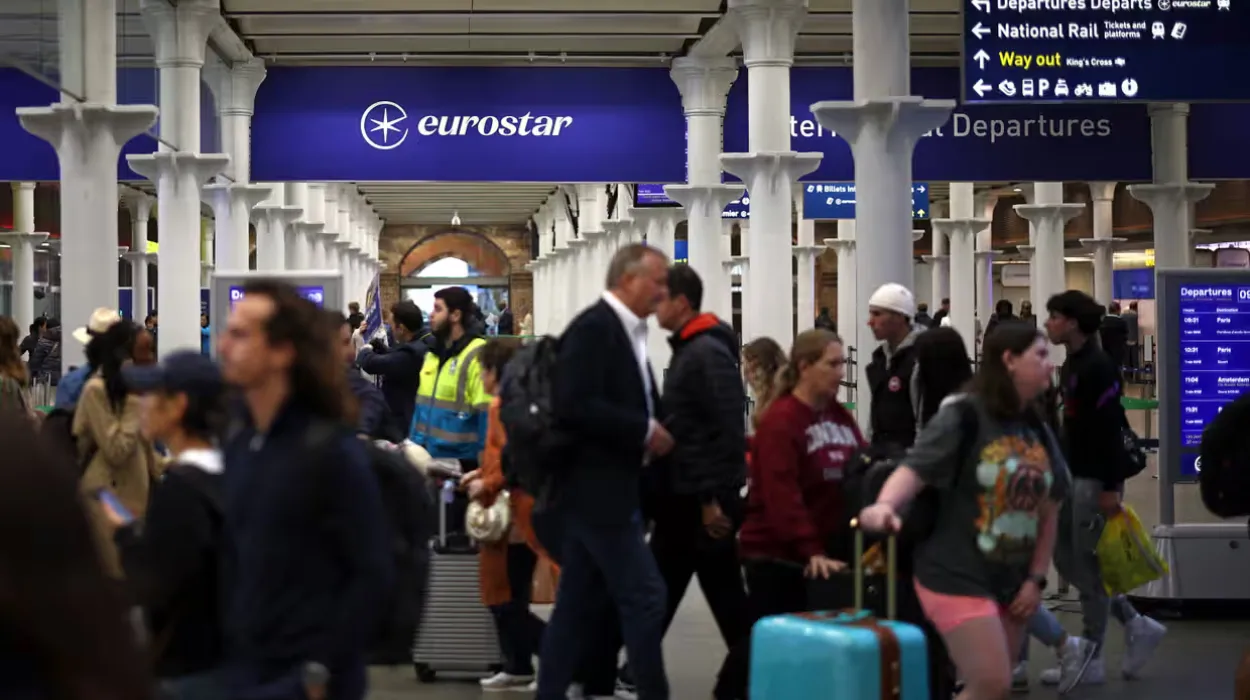London (Parliament Politics Magazine) – A new agreement between St Pancras and the Channel Tunnel operator collaborates to introduce high-speed rail services to Germany and Switzerland by 2029.
St Pancras station in London and Channel Tunnel operators have teamed up to launch additional train services from the UK to France, with future routes extending to Germany and Switzerland.
How will St Pancras and Channel Tunnel partnership expand rail links?
The collaboration between St Pancras and the tunnel operators marks a significant step in the growing push for new rail services from England to Europe, as the UK’s only international station plans to nearly triple its passenger volume per hour.
St Pancras station London plans to enhance its capacity to accommodate more passengers. They aim to raise the number passing through at peak times from 1,800 to 5,000. The station also plans to add more connections to France and introduce new routes to Germany and Switzerland.
What did St Pancras and Getlink say about new rail routes to Europe?
St Pancras Highspeed (LSPH) in London, previously known as HS1, said they partnered with Getlink, the Channel Tunnel operator in Paris, to improve international rail services. Their collaboration focuses on reducing travel times, coordinating timetables, aligning growth strategies, and introducing additional trains per hour for cross-border travel.
A tunnel operator, Getlink, announced that upcoming direct high-speed rail services could connect Germany, Switzerland, and France, possibly serving cities like Cologne, Frankfurt, Geneva, and Zurich. The company has set a target to launch these routes by 2029.
The Office of Rail and Road ordered HS1 to lower track charges between St Pancras and the Channel Tunnel to attract new rail operators.
How did LSPH’s recent study propose to increase passenger numbers?
Last year, LSPH commissioned Active Thinking to explore ways to raise passenger numbers. The report concluded that “a modest amount of new infrastructure would ‘unlock’ most of the constraints currently hampering growth” at St Pancras.
The CEO of LSPH, Robert Sinclair, expressed his vision for “a future where high-speed rail is the preferred option for travelling to Europe.”
He stated, that his firm and Getlink would “actively work together to encourage new and existing train operators to expand capacity and launch new destinations unlocking the potential of a fully connected Europe.”
How has Eurostar evolved over 30 years of Channel tunnel operations?
For three decades, Eurostar has been the exclusive provider of foot passengers through the Channel Tunnel, while Getlink’s Le Shuttle transports vehicles with drivers. Despite its long history, Eurostar has come under fire for its high fares and has ceased operating international services from Ashford and Ebbsfleet.
The network links London with Paris, Brussels, and Amsterdam, and offers seasonal services to Bourg-Saint-Maurice. Though, it has not reached its ambitious initial target of extending to cities like Manchester and Edinburgh.
Could new rail competitors challenge Eurostar?
Several train operators believe growing demand for European travel could stem from passengers looking to reduce the substantial carbon emissions associated with air travel.
New competitors to Eurostar, like Richard Branson’s Virgin Group, Spanish Evolyn, and the Dutch startup Heuro, are emerging as potential rivals.
What are the most significant historical events associated with St Pancras?
- St Pancras station opened on October 1, 1868. It was designed by the renowned architect William Henry Barlow. The station is famous for its remarkable Victorian Gothic design.
- The station faced severe damage during both World War I and II. In 1942, a 500kg bomb bomb pierced the roof, leading to severe destruction of the station’s structure.
- During the 1960s, the historical station faced demolition when British Railways planned to shift station services.
- St Pancras station was completely revamped with an £800 million transformation in 2007. The extensive redevelopment included the integration of Eurostar services to Europe via the Channel Tunnel.


